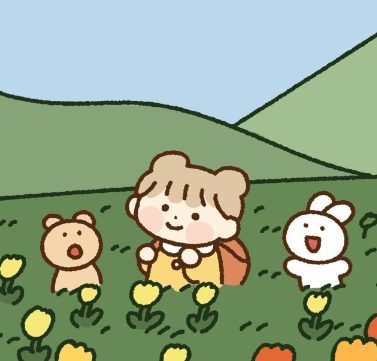[Paper Review] Learning to Cartoonize Using White-box Cartoon Representations 논문 리뷰
업데이트:
- Paper: Learning to Cartoonize Using White-box Cartoon Representations (CVPR 2020): paper, project, code
- GAN-Zoos! (GAN 포스팅 모음집)

기존의 연구들(ex. CartoonGAN)은 특정 training data에 fit되게 학습되는 black-box model
→ general하고 style이 잘 담겨져있는 이미지를 생성하는 능력이 떨어짐
White Box Cartoonization
white box cartoonization 논문은 작가들이 어떻게 그림을 그리는지에 착안하여 이 방법론을 모델에 적용하였다. 작가들은 보통 이미지의 윤곽을 먼저 그려놓은 후(surface) 이미지의 detail들을 추가하곤 하는데(texture), 본 논문에서는 이런 그림 프로세스 자체가 모델에도 녹아들도록 하였다.
Contribution (1) 그림을 그릴 때는 크게 세가지가 중요 ⭐️
- based on our observation of cartoon painting behavior
- surface representations
- image의 smooth surface를 뽑아내는 파트
- 이미지의 weighted low-frequency component $\boldsymbol{I}_{s f} \in \mathbb{R}^{W \times H \times 3}$를 추출
- color composition이나 edge와 같은 surface texture는 보존되지만 detail한 특징이나 texture는 무시
- 보통 작가들이 composition draft를 먼저 그리고 차후에 detail을 추가하곤 하는데, 이 smoothed surface를 찾는 파트가 이 프로세스라고 생각하면 됨
- structure representation
- global structural information이랑 만화 스타일의 sparse color block을 찾는 부분
- 먼저 input image에서 segmentation map을 뽑은 다음에, 각 seg region에 adaptive coloring algorithm을 적용시켜서 structure representation $\boldsymbol{I}_{s t} \in \mathbb{R}^{W \times H \times 3}$ 을 생성
- texture representation
- 이미지의 painted detail이나 edge 정보를 포함하는 부분
- input image $\boldsymbol{I} \in \mathbb{R}^{W \times H \times 3}$ 를 single-channel intensity map $\boldsymbol{I}_{t} \in \mathbb{R}^{W \times H \times 1}$ 으로 변환
- 이때 이 intensity map은 color나 luminance에 대한 정보는 가지고 있지 않으며 relative pixel intensity 만 보존된다
- 이 파트는 network가 high-frequency인 textural detail을 학습하도록 돕는다

Contribution (2) GAN Framework
- (1) 의 3 representations을 바탕으로 GAN 모델을 end-to-end로 optimize
- GAN framework
- Generator G
- 두 개의 Discriminator, D
- $D_S$ : model의 output에서 뽑아낸 surface rep와 실제 cartoon에서 뽑아낸 surface rep를 판별
- $D_t$ : model의 output과 cartoon에서 뽑아낸 texture rep를 판별
- pre-trained VGG
- output과 추출된 structure rep 사이의 perceptual similarity를 구해 global content에 대한 constraint를 검
- 또한, input과 output사이에 대해서도 같은 loss를 계산
Contribution (3) high-quality의 이미지 생성 & SoTA !
Proposed Approach

(1) Learning From the Surface Representation
The surface representation: 이미지를 smooth하게 만드는 파트
- global semantic structure는 보존되지만, texture나 detail들을 사라진다.
edge가 보존된채 이미지를 filtering하기 위해 differentiable guided filter $\mathcal{F}_{d g f}(\boldsymbol{I}, \boldsymbol{I})$ 를 도입
- $\mathcal{F}_{d g f}(\boldsymbol{I}, \boldsymbol{I})$ 는 image $\boldsymbol{I}$ 를 input과 guide map으로써 사용
- texture나 detail을 사라진채 surface representation만 추출된다.
- Discriminator: model의 output과 reference cartoon image $I_c$ 가 비슷한 surface를 가지고 있는지 판별
(2) Learning From the Structure representation
The structure representation: global content, sparse color blocks, celluloid style cartoon workflow내의 깔끔한 boundaries를 학습
- 이미지의 자그마한 chunk/block 들이 비슷한 color, content를 가지도록 강제하는 term
- felzenszwalb algorithm를 통해 image를 segmentation
- 추가로, selective search를 도입하여 segmented region을 병합하고 sparse segmentation map을 추출
- Felzenszwalb 알고리즘과 같은 superpixel algorithm은 pixel들간의 similarity만을 고려하고 의미있는 정보들은 무시하기 때문에 이 과정이 필요하다고 함
- 색 추출 과정에서 segmentation 내의 average color를 구하지 않고, adaptive coloring algorithm을 도입
- Standard superpixel algorithms은 각각의 segmented region에서 pixel들 간의 average color를 구하곤 함
- 이렇게 했더니 global contrast가 낮아지고, 이미지가 어두워져 최종 이미지의 quality가 떨어짐 (
Fig 5 (a, c))
- 이렇게 했더니 global contrast가 낮아지고, 이미지가 어두워져 최종 이미지의 quality가 떨어짐 (
-
\[\begin{aligned}\boldsymbol{S}_{i, j} &=\left(\theta_{1} * \overline{\boldsymbol{S}}+\theta_{2} * \tilde{\boldsymbol{S}}\right)^{\mu} \\\left(\theta_{1}, \theta_{2}\right)=& \begin{cases}(0,1) & \sigma(\boldsymbol{S})<\gamma_{1} \\(0.5,0.5) & \gamma_{1}<\sigma(\boldsymbol{S})<\gamma_{2} \\(1,0) & \gamma_{2}<\sigma(\boldsymbol{S})\end{cases}\end{aligned}\]Fig 5 (a, c)에서의 문제를 해결하기 위해 저자들은 adaptive coloring algorithm을 도입-
parameter는 다음의 값이 가장 좋은 결과를 냈다고 보고
\[\gamma_{1}=20, \gamma 2=40 \text { and } \mu=1.2\]
-
- Standard superpixel algorithms은 각각의 segmented region에서 pixel들 간의 average color를 구하곤 함
- pre-trained VGG19 network로 이런 structure representation이 잘 추출되도록 학습
(3) Learning From the Textural Representation
the texture representation: cartoon image의 high-frequency feature인 texture에 대한 정보를 담고 있는 파트
- 이미지의 밝기와 색상 정보는 실제 이미지와 cartoon image를 쉽게 판별할 수 있게 한다.
-
따라서 저자들은 random color shift algorithm $\mathcal{F}_{r c s}$ 를 적용한 color image 에서 single-channel texture representation 을 뽑아냈다고 한다.
\[\mathcal{F}_{r c s}\left(\boldsymbol{I}_{r g b}\right)=(1-\alpha)\left(\beta_{1} * \boldsymbol{I}_{r}+\beta 2 * \boldsymbol{I}_{g}+\beta_{3} * \boldsymbol{I}_{b}\right)+\alpha * \boldsymbol{Y}\]- $\boldsymbol{I}_{r g b}$ : 이미지의 RGB, 세 color channels
- $\boldsymbol{Y}$ : RGB image를 standard grayscale로 변환한 이미지
- $\text { We set } \alpha=0.8, \beta_{1}, \beta_{2} \text { and } \beta_{3} \sim U(-1,1)$
- random color shift를 하기 때문에 random intensity map이 생성되고, 이미지의 밝기나 색상 정보가 제거된다.
- Discriminator: model의 output과 reference cartoon image $I_c$ 가 비슷한 texture를 가지고 있는지 판별
(4) Full model
\[\begin{aligned}\mathcal{L}_{\text {total }} &=\lambda_{1} * \mathcal{L}_{\text {surface }}+\lambda_{2} * \mathcal{L}_{\text {texture }} \\&+\lambda_{3} * \mathcal{L}_{\text {structure }}+\lambda_{4} * \mathcal{L}_{\text {content }}+\lambda_{5} * \mathcal{L}_{t v}\end{aligned}\]하나의 Generator와 2개의 Discriminator를 사용하여 세 representation에서 학습된 feature들이 joint하게 optimize되도록 학습
- total-variation loss $\mathcal{L}_{t v}$
- 생성된 이미지가 spatial smoothness하도록 학습 + high frequency noise를 줄여줌
- content loss $\mathcal{L}_{\text {content }}$
- input image와 결과 이미지가 비슷한 semantic 정보를 가지도록 강제해주는 term
- structure loss와 비슷하게 pre-trained VGG 16 loss를 사용
- interpolation loss
- output image를 sharp하게 만들기 위해 loss를 추가

Experiments
Implementation
- Training
- 우선 content loss만을 사용하여 generator를 50k iter 동안 pre-train을 한 후
- GAN 으로 jointly optimize
- 총 100k iter동안 학습을 했다고 함 (이후부터는 거의 수렴)

- Generator
- fully convolutional U-Net 구조
- stride2 conv-layer로 down-sampling
- bilinear interpolation layer로 upsampling → checker-board artifact를 없앰
- Discriminator
- Patch discriminator → detail들이 더 잘 학습되며, 훈련 속도가 빨라짐
Datasets
- real world photos
- FFHQ: 10000 images
- landscape: 5000 images
- Cartoon images
- human face: 10000 images
- landscape: 10000 images
- Style: Kyoto animation, P.A.Works, Shinkai Makoto, Hosoda Mamoru, and Miyazaki Hayao
Result



댓글남기기